American Visitors Depicted by Japanese Artists
The 1860s saw the emergence of 'Yokohama-e', a type of woodblock print dedicated to the representation of foreigners visiting Japan.
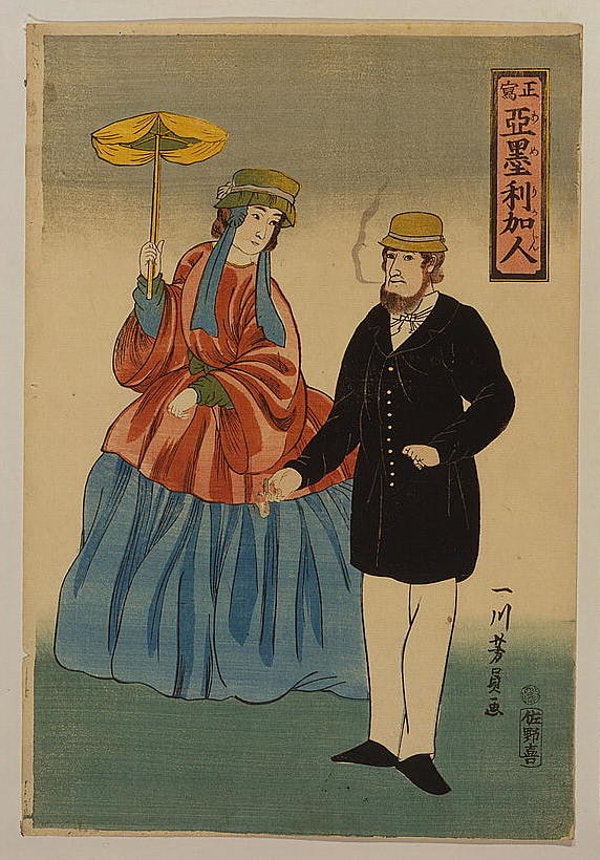
Yoshikazu Utagawa, “Shosha - Amerikajin”, 1861 © Public domain
A separate genre within the larger ukiyo-e family, those Japanese woodblock prints whose name translates into English as ‘pictures of the floating world’, Yokohama-e do not depict flora and fauna but rather foreigners, particularly North Americans, who were on Japanese soil in the 1860s.
These works were mainly produced by the two artists central to this artistic movement: Yoshitora Utagawa and Yoshizaku Utagawa. For almost twenty years, they captured images of foreigners discovering Japan, which at the time was slowly opening up to the West.
Documenting new developments
From 1639, Japan entered an isolationist era known as sakoku that would last for over two centuries. It was not until 1854, under the coercion of Commodore Perry, that the country signed a peace treaty re-establishing diplomatic and trading relations with the USA. In 1859, the port of Yokohama became one of the main ports for trade with America. As a result, the North American population was larger there than anywhere else in Japan, giving rise to this new art form of Yokohama-e.
The American presence in Japanese territory continues to be documented today, particularly by photographers like Greg Girard in his series Hotel Okinawa.
More information about Yokohama-e can be found on the Library of Congress website.
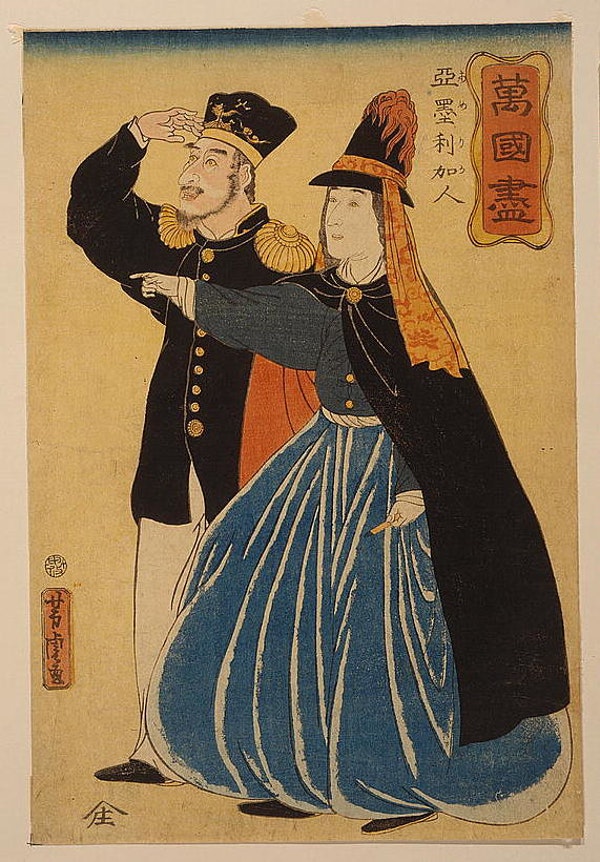
Yoshitora Utagawa, 'Bankoku zukushi - Amerikajin', 1860 © Public domain
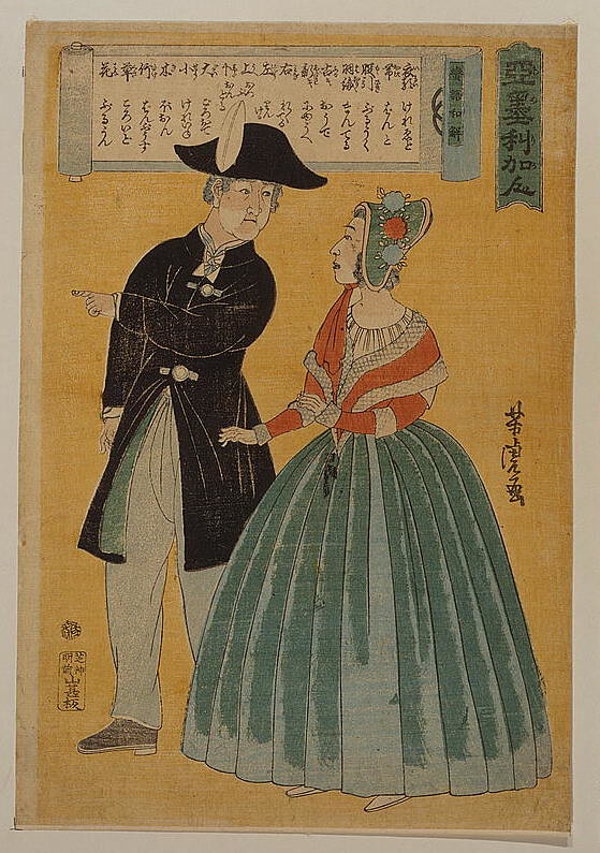
Yoshitora Utagawa, 'Amerikajin - Bango Wakai', 1863 © Public domain

Yoshikazu Utagawa, 'Yokohama meisho benten: Amerikajin', 1861 © Public domain
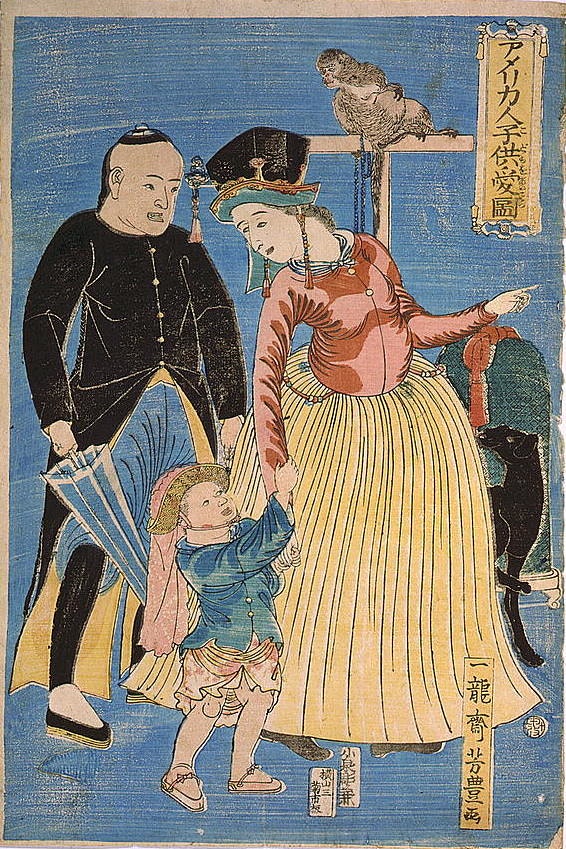
Yoshitoyo Utagawa, 'Amerikajin Kodomo O Aisu Zu', 1860 © Public Domain
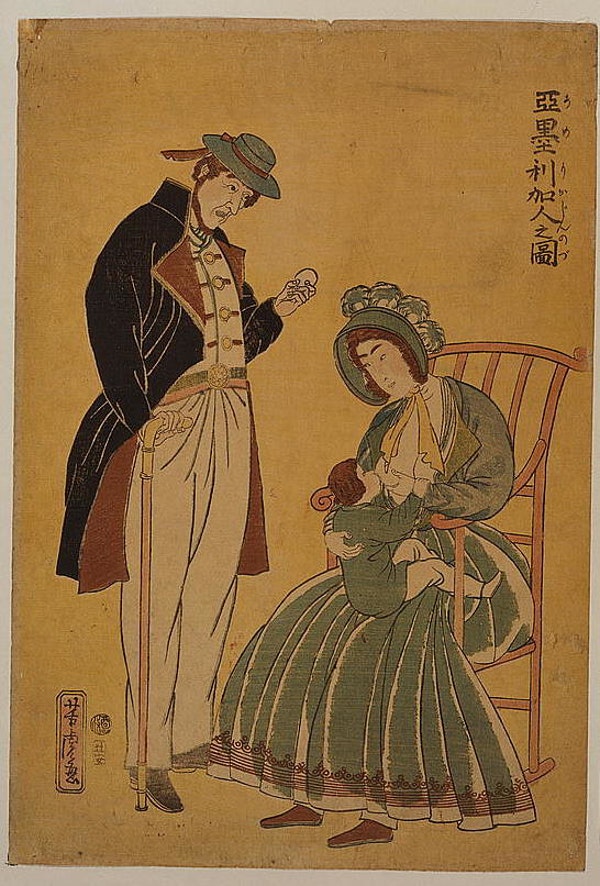
Yoshitora Utagawa, 'Amerikajin No Zu', 1861 © Public domain
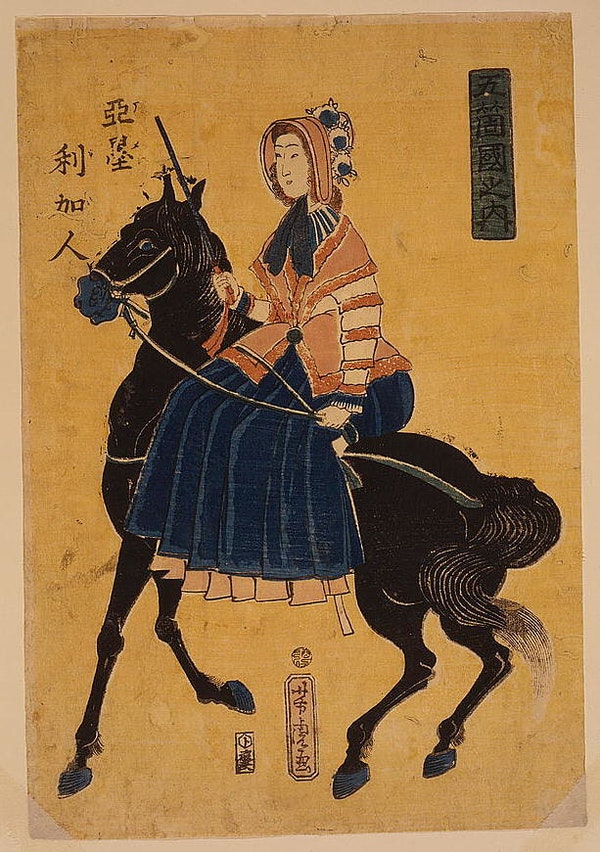
Yoshitora Utagawa, 'Gokakoku no uchi - Amerikajin', 1861 © Public domain
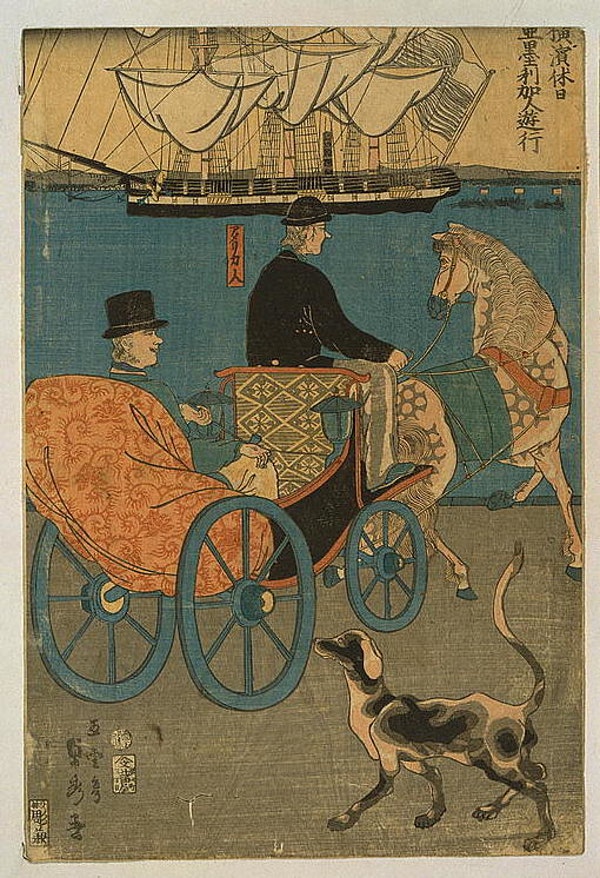
Sadahide Utagawa, 'Yokohama kyujitsu Amerikajin yuko', 1861 © Public domain
TRENDING
-
A House from the Taisho Era Reveals Its Secrets
While visiting an abandoned building, Hamish Campbell discovered photographs the owner had taken of the place in the 1920s.

-
The Taboo-Breaking Erotica of Toshio Saeki
The master of the 1970s Japanese avant-garde reimagined his most iconic artworks for a limited box set with silkscreen artist Fumie Taniyama.

-
With Meisa Fujishiro, Tokyo's Nudes Stand Tall
In the series 'Sketches of Tokyo', the photographer revisits the genre by bringing it face to face with the capital's architecture.

-
Masahisa Fukase's Family Portraits
In his series ‘Family’, the photographer compiles surprising photos in which he questions death, the inescapable.

-
Hajime Sorayama's Futuristic Eroticism
The illustrator is the pioneer for a form of hyperrealism that combines sensuality and technology and depicts sexualised robots.





